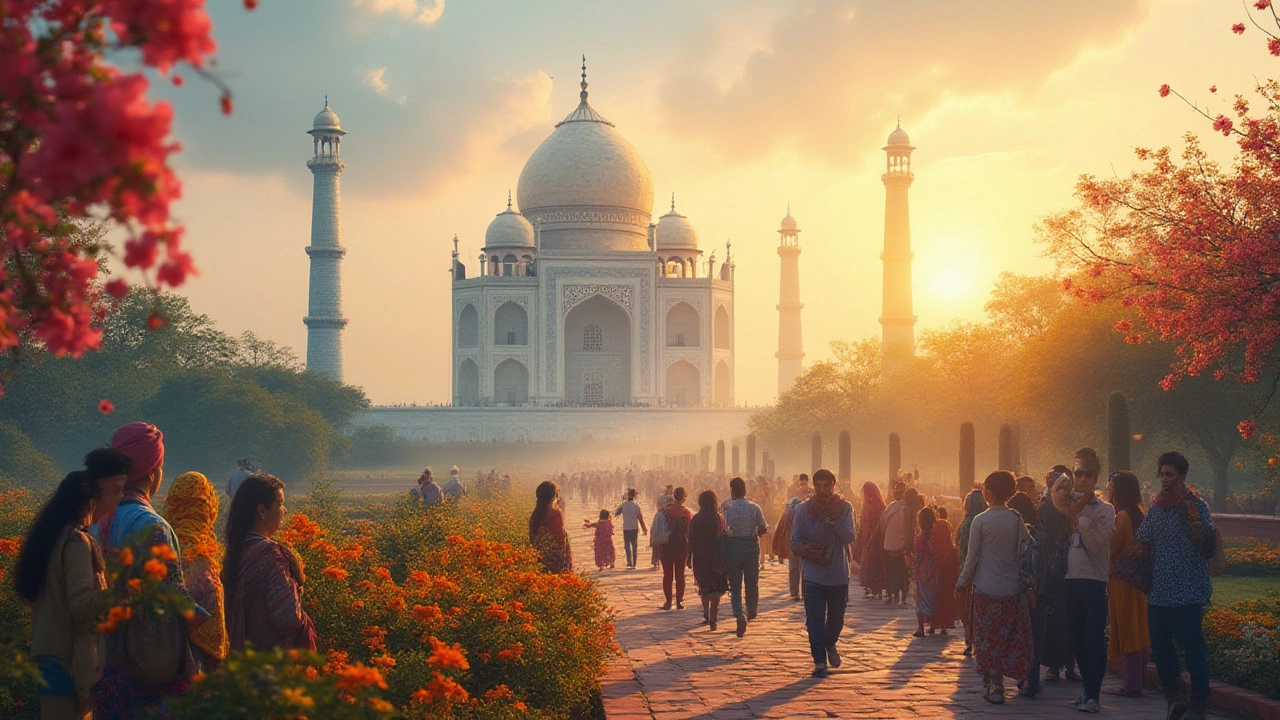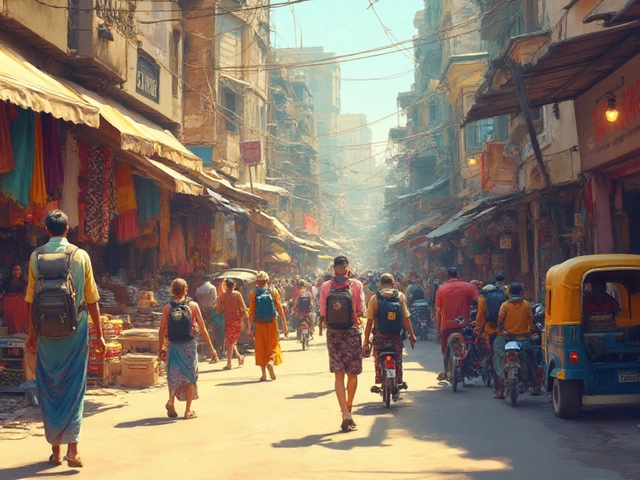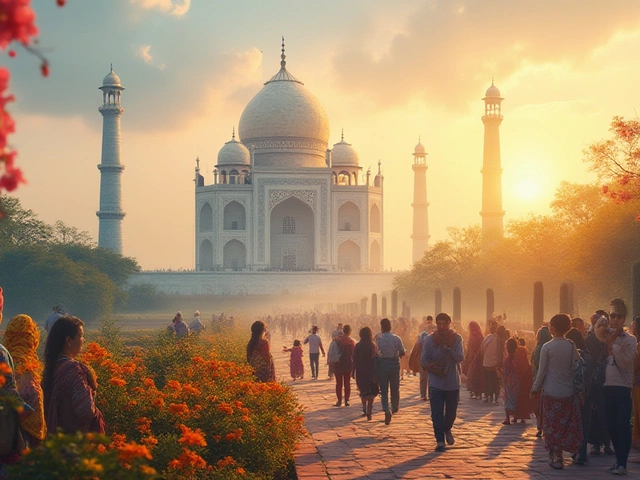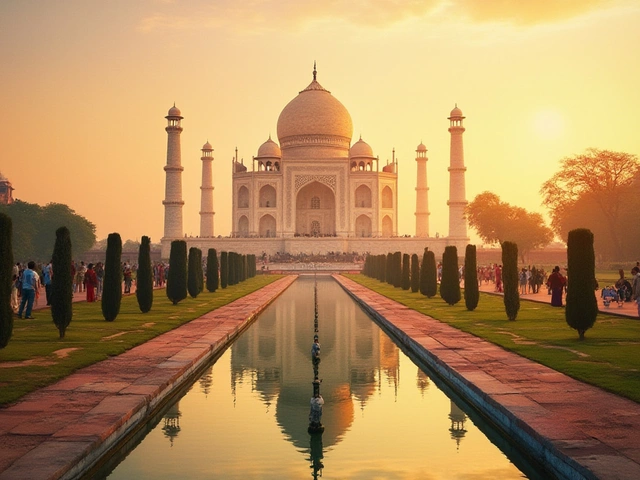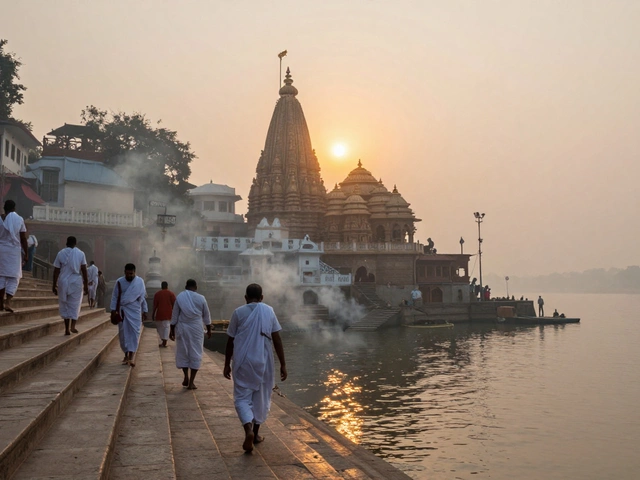Crowds shimmer under the early Agra sun, selfie sticks sway, and every step feels like a step closer to both history and magic. If you’ve ever scrolled through your social feed and spotted a photo of India’s number one visited place, then you know what comes next. Yes, the Taj Mahal. It’s not just the most Instagrammed spot in the country—it pulls in more than 7 million visitors each year, and its white marble domes are magnets for dreamers, history buffs, and hopeless romantics alike. What makes it so irresistible? Sure, it stands for love, for loss, for the kind of architectural beauty that makes you want to stand and stare. But there’s more to this story, and I’ll walk you right into it. Whether you’re planning your first visit or recalling your tenth, there’s always something new shimmering beyond those famous arches.
The Magnetic Pull of the Taj Mahal: Why the World Just Can’t Stay Away
Numbers don’t lie. Every year, roughly 7–8 million people step through the gates of the Taj Mahal, making it not only India’s most popular destination but one of the world’s top bucket-list spots. Visitors come from every continent, mixing in awe and humidity, capturing the monument at sunrise, noon, and those magical golden hours when the marble glows pink and orange. Did you know the Taj has been a UNESCO World Heritage Site since 1983? Or that it’s considered one of the New Seven Wonders of the World? It beats even popular temples, bustling city squares, and luxury beach resorts.
If you’re wondering if the hype is real, the answer is yes. The Taj isn’t huge in size compared to some megalithic structures, but it’s colossal in presence. The complex covers around 42 acres, and you can easily spend half a day just soaking up all its detail—from deep-carved calligraphy in black marble to delicate semi-precious stone inlay. Its biggest draw, though, is the feeling it leaves you with: wonder, melancholy, and a sense of quiet power that seems to rise from the very roots of the Yamuna riverbank it sits on.
Mughal Emperor Shah Jahan had the Taj built as a tomb for his favorite wife, Mumtaz Mahal, in the 17th century. Love stories always have a way of sticking, don’t they? But what gives the Taj its real pull is how it takes that story and carves it right into marble. Every surface carries a trace of devotion and loss, making it more than just a pretty building. People notice the symmetry, the gleaming minarets, the changing colors depending on the time of day. On busy days, you’ll walk alongside thousands, shuffling between rose gardens, ancient fountains, and well-trodden paths—but you will also find quiet moments, maybe in the echo of your footstep, or the quiet laughter of a couple who just carved their initials into a heart-shaped lock on the outer fence (shh, officially, that’s not allowed).
What about famous visitors? Princes, presidents, rockstars—they’ve all snapped that iconic photo on the Lady Diana bench (itself a small tourist spot now). The Taj often appears in lists of “the world’s most visited” and is the top searched-for location in India on Google year after year. Local guides will show you optical illusions hidden in the architecture, from the way the minarets lean slightly outwards (to protect the main tomb during earthquakes) to the giant gate that shrinks the Taj when you walk away, and stretches it when you walk toward it. These aren’t parlor tricks; they’re deliberate design, built to make you feel something.
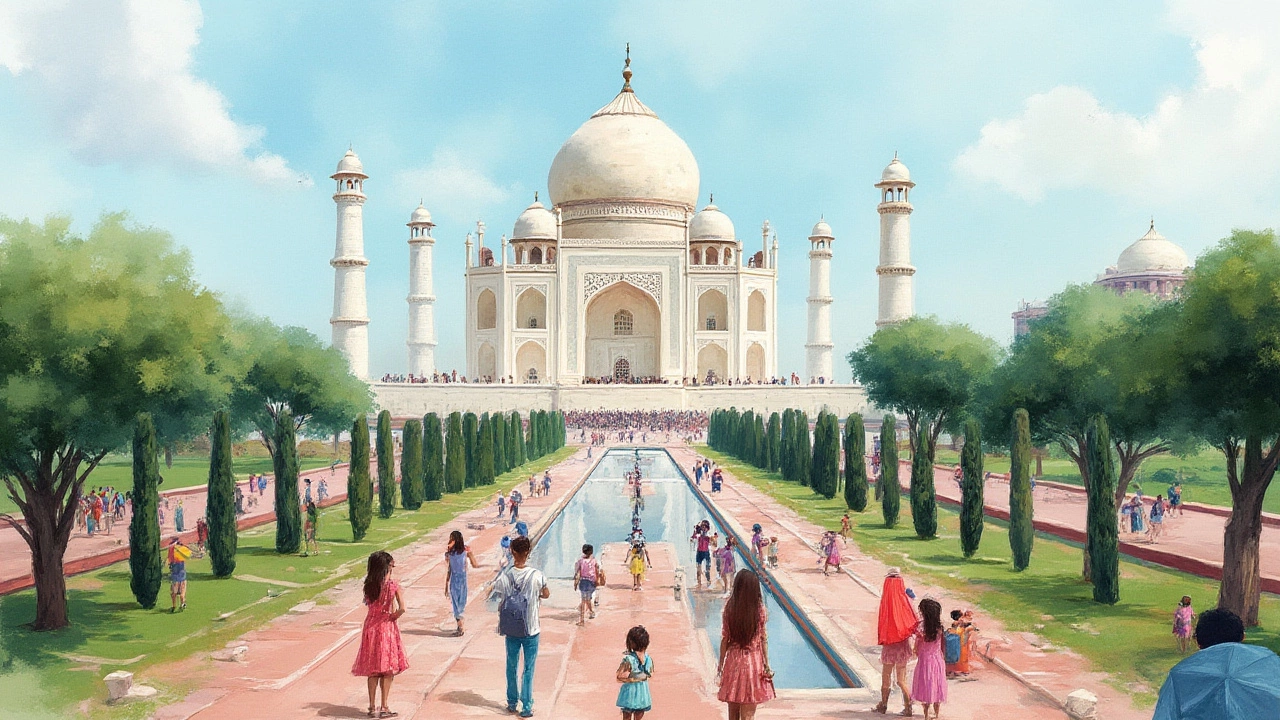
Tips for Beating the Crowds and Unlocking Hidden Wonders
If you want to experience the Taj Mahal like a pro, start by planning your visit around timing. The gates open at sunrise, and that early-morning light is pure magic. You’ll also dodge the largest crowds, which tend to swell after 10 AM. Wear shoes easy to slip off (bare feet or shoe covers are required when walking on the main platform) and bring water—Agra bakes in the midday sun, and there aren’t vendors inside the complex. As tempting as it is to take a hundred photos, set aside your camera for a few minutes just to soak up the moment. Let’s be honest, you’ll remember how you felt more than the umpteen near-identical selfies.
There are a bunch of hidden gems only folks in the know might spot. For example, look for the wish holes—a tradition is to poke a finger through crenellated stone railings, make a wish, and hope love finds you like it found Shah Jahan and Mumtaz. The gardens are laid out in a classic Persian charbagh style, which means they’re arranged in four neat quadrants, all spreading from a central fountain. The layout isn’t just for looks; it represents the Islamic concept of paradise. At certain times in spring or fall, you might spot wild parrots or hoopoes darting between the trees (especially near dawn).
Want to dodge the biggest crowds completely? Visit during the off-season—summer months run hot, but you’ll get more quiet. Another tip: head to Mehtab Bagh, the moonlit garden across the river, for one of the best sunset views of the Taj. For a truly special peek, plan your visit around a full moon. The monument opens for night viewing five days a month (two before, the night of, and two after the full moon), with special tickets needed. The way the marble glows in the moonlight will stay with you forever.
Looking for some cool facts? Here’s a handy table:
| Fact | Detail |
|---|---|
| Annual Visitors | 7–8 million (pre-pandemic) |
| Year Built | 1632–1653 |
| Total Workers Involved | Estimated 20,000 artisans |
| Number of Semi-Precious Stones Used | 28 types |
| Changes in Color | Pale pink (morning), dazzling white (afternoon), golden (evening), bluish silver (moonlight) |
| Full Moon Viewing | 5 nights/month, tickets required |
| Global Visitors Percentage | About 10–12% are foreign tourists |
Many travelers also combine their visit with Agra Fort or Fatehpur Sikri, both fairly close and packed with their own stories. If you’re aiming for the perfect photo, stand at the central water channel—you’ll get that classic reflection shot. For fewer photobombers, skip weekends and major Indian holidays when local tourism soars. And when you leave, check out Agra’s sweet shops for petha, a local candy made from ash gourd. It’s oddly addictive and the best way to end a monumental visit.
Beyond Beautiful: The Iconic Place in India That Continues to Inspire
The Taj Mahal isn’t just something to check off a list; it finds a way into your memories. What’s surprising is how many ways people connect with it. For some, it’s pure architectural mastery—a building where almost every inch is crafted for poetry and perfection. Architects talk about the perfect symmetry and how each part, from the smallest floral tile to the huge marble screens, fits into a bigger vision. For others, it’s all about love and longing. The story of Shah Jahan and Mumtaz Mahal still echoes through the gardens, in the scent of jasmine during spring, and the quiet stones of the cenotaph.
The Taj also shows up in art, music, books, and movies. Bollywood has filmed dozens of scenes against its snowy backdrops, and painters have tried for lifetimes to get the light just right. Indian poet Rabindranath Tagore called it a "tear on the face of eternity." Even if you come with a checklist, it’s hard not to feel moved, no matter how far you’ve come or how many wonders you’ve seen. Kids run and squeal while their parents try to corral them for a family photo, elderly visitors sit in the shade and look quietly satisfied, and couples always, always seem to linger a little longer.
And no, it’s not perfect. Pollution threatens its marble, so the Indian government limits cars near the site and sometimes gives the structure a mud-pack facial to preserve its glow. Some locals grumble about high ticket prices (tourists pay more than Indians), and yes, the bangles-and-magnets hawkers can be persistent. Still, ask any visitor, and the awe will nearly always outweigh the hassles.
Visitors have trended up thanks to social media, word of mouth, and easier travel. Post-pandemic, numbers are creeping toward pre-2020 highs again, with new eco-friendly tours and digital ticketing making the experience smoother. If you’re traveling alone or with family, there’s security and plenty of help for lost or bewildered tourists. Guides are licensed—and some spin stories as vividly as any Bollywood director. If crowds and queueing aren’t your thing, just hang back and watch the drama: proposals, group hugs, wide-eyed kids, and the feverish snapping of a thousand cameras trying to bottle up a piece of that old magic.
Even if the idea of one place holding so much attention seems wild in a country crowded with holy rivers, ancient cities, and buzzing street bazaars, the Taj Mahal really does stand alone. It draws people not just as travelers, but as humans looking for beauty, for history, for that rare thing that makes your heart beat faster just for having stood and stared. There are flashier attractions out there, yet none as enduring, or as quietly dazzling, as the one that keeps India’s heart—and the world’s—beating just a bit faster.
